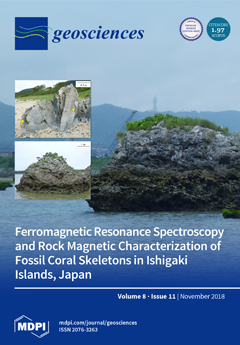The Tavan Bogd mountains (of which, the main peak, Khuiten Uul, reaches 4374 m a.s.l.) are situated in the central part of the Altai mountain system, in the territories of Russia, Mongolia and China. The massif is the largest glacierized area of Altai.
[...] Read more.
The Tavan Bogd mountains (of which, the main peak, Khuiten Uul, reaches 4374 m a.s.l.) are situated in the central part of the Altai mountain system, in the territories of Russia, Mongolia and China. The massif is the largest glacierized area of Altai. The purposes of this study were to provide a full description of the scale and structure of the modern glacierized area of the Tavan Bogd massif, to reconstruct the glaciers of the Little Ice Age (LIA), to estimate the extent of the glaciers in 1968, and to determine the main glacial trends, and their causes, from the peak of the LIA. This work was based on the results of long-term field studies and analysis of satellite and aerial data. At the peak of the LIA, Tavan Bogd glaciation comprised 243 glaciers with a total area of 353.4 km
2. From interpretation of Corona images, by 1968 the number of glaciers had decreased to 236, with a total area of 242 km
2. In 2010, there were 225 glaciers with a total area of 201 km
2. Thus, since the peak of the LIA, the glacierized area of the Tavan Bogd mountains decreased by 43%, which is somewhat less than for neighboring glacial centers (i.e., Ikh-Turgen, Tsambagarav, Tsengel-Khairkhan and Mongun-Taiga mountains). The probable causes are higher altitude and the predominance of larger glaciers resistant to warming. Accordingly, the smallest decline in Tavan Bogd occurred in the basins of the Tsagan-Gol (31.7%) and Sangadyr (36.4%) rivers where the largest glaciers are located. In contrast, on the lower periphery of the massif, where small glaciers predominate, the relative reduction was large (74–79%). In terms of general retreat trends, large valley glaciers retreated faster in 1968–1977 and after 2010. During the 1990s, the retreat was slow. After 2010, glacial retreat was rapid. The retreat of glaciers in the last 50–60 years was caused by a trend decrease in precipitation until the mid-1970s, and a sharp warming in the 1990s and early 2000s.
Full article





